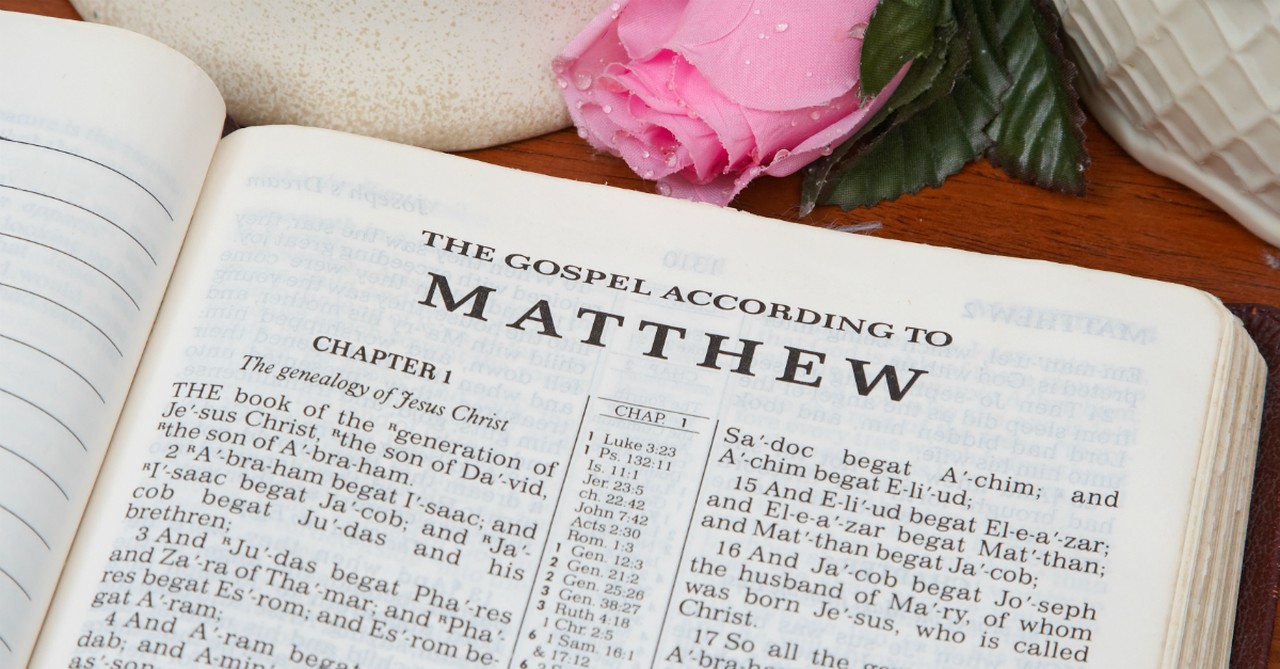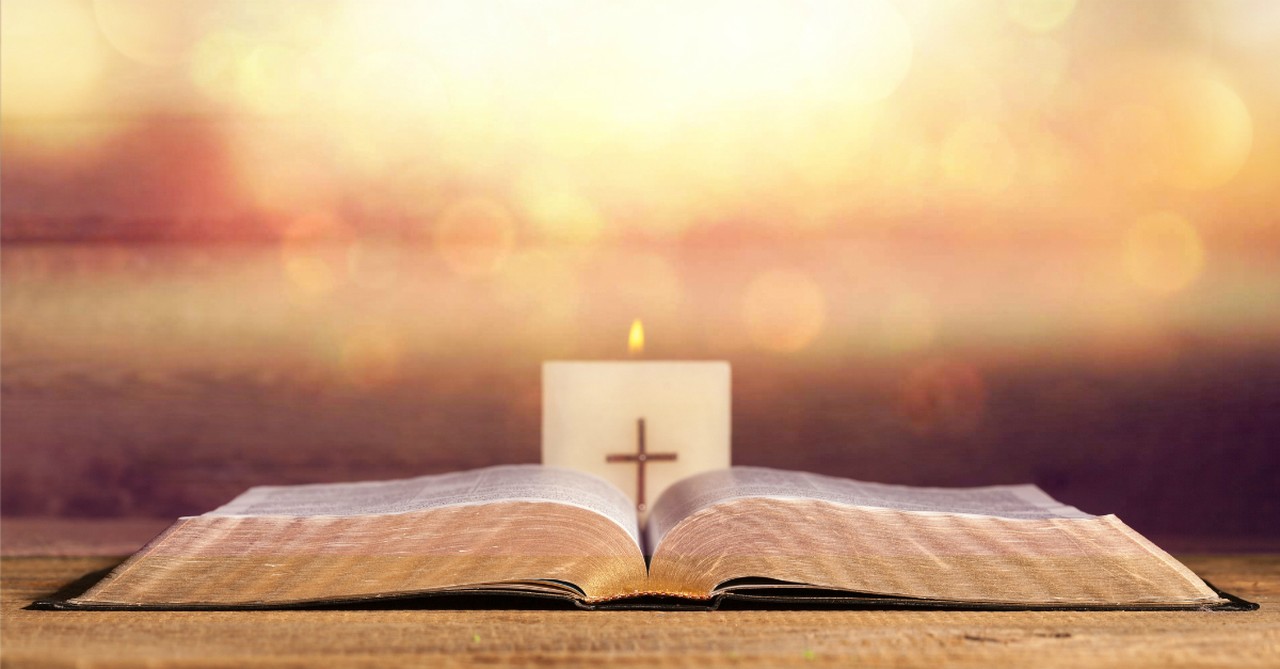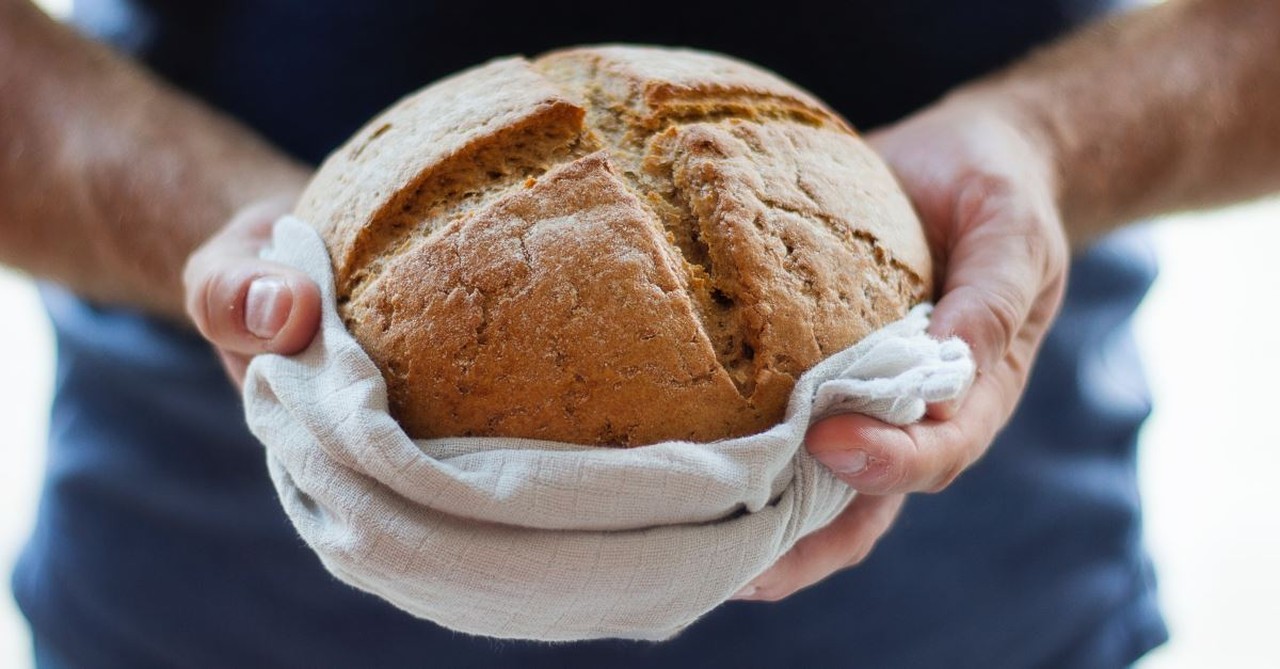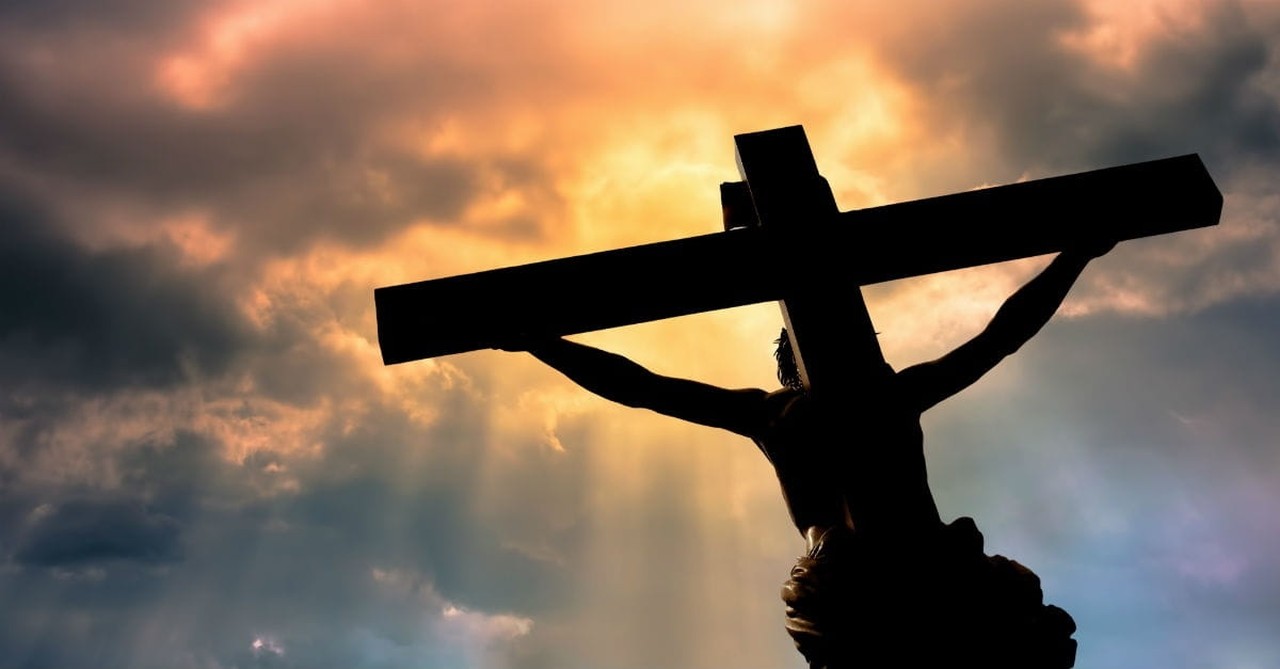An Inspirational Reading Plan to Refocus on Holy Week during COVID-19

This year, as we have been required to pause from our regular schedules to slow the spread of COVID-19, we have an opportunity to allow scriptural passages and Jesus’ example to bring us peace in the midst of this crisis.
Looking back on my childhood, it seemed Easter would almost sneak up on our family. Sometime after Valentine’s Day there would be a quick trip to the store to buy an Easter outfit and dye to color eggs, but there wasn’t much else we did to prepare. Even then I felt a need for something more.
As an adult, I discovered that church leaders throughout history recognized the need to help Christians prepare their hearts for Easter and created regular spiritual practices and routines to highlight significant events like Easter.
Observing Lent, the 40 days before Easter, has become a meaningful part of my spiritual life. Recently, I have also begun to more intentionally reflect on the events of the last week of Jesus’ life. This is possible because Gospel writers provide us with so many details of Jesus’ final days.
The traditional way Christians refer to the last week of Jesus’ life is to call it Holy Week. It is also referred to as Passion Week, which comes from the Latin word passio meaning “suffering.”
Holy Week encompasses the eight days beginning on Palm Sunday and culminating on Easter Sunday.
Following is a synthesis of each day of Holy Week including specific Bible passages that provide the details of Jesus’ week. Consider using the passages as a reading guide to readjust your focus on Holy Week and take time to consider the point of reflection for each day:
Photo Credit: ©GettyImages/thanasus
Day 1: Palm Sunday

Day 1: Palm Sunday
SLIDE 1 OF 7
Easter ultimately reminds us that because of Jesus, we have an eternal, secure home in heaven where there is no more suffering, no more pain, and no more death.
Verses to read:
Matthew 21:1-17
Mark 11:1-11
Luke 19:28-48
John 12:12-36
Road to Jerusalem
On Palm Sunday, a great crowd had gathered in Jerusalem in preparation for the annual Passover celebration. As Jesus and his disciples approached the city, two disciples found a donkey that had never been ridden (Matthew 21:1-3). Bringing it to Jesus, Jesus rode into the city over the coats people had thrown on the ground to honor him. Large crowds also brought palm branches and went ahead of Jesus, waving the branches and shouting, “Hosanna! Blessed is he who comes in the name of the Lord! (Mark 11:9-10).
Temple in Jerusalem
After Jesus entered Jerusalem, he went to the temple where he healed many people. He taught the burgeoning crowds who gathered in preparation for Passover. Jesus demonstrated his spiritual authority when he overturned the money changers’ tables because they were taking advantage of the people who had come to worship (Mark 11:15-17).
Staying the Night in Bethany
Sunday night, Jesus went to the town of Bethany and spent the night, most likely at Martha’s house because she often extended hospitality to Jesus and his disciples (Matthew 21:17).
Reflection: On Palm Sunday, we remember that Jesus willingly went to Jerusalem in obedience to the Father, knowing that he was on a journey toward the cross. What difficult journey are you on? What steps of obedience do you need to take?
Photo Credit: ©Unsplash/Avel Chuklanov
Day 2: Holy Week Monday

Day 2: Holy Week Monday
SLIDE 2 OF 7
Verses to read:
Matthew 21:18-26:5
Mark 11:1-13:36
Luke 20:1-22:6
John 12:37-50
Temple in Jerusalem
On Monday, Jesus again went to the temple to teach the gathered crowds and encourage his disciples. He also confronted the religious leaders, who were amazed at Jesus’ wisdom and knowledge (Matthew 22:22). Jesus also prepared his followers for ministry following his death and resurrection (Luke 21:12-19).
Bethany
Monday night, Jesus returned to Bethany and spent the night (Luke 21:37).
Reflection: On Monday of Holy Week, we remember Jesus’ teachings to his disciples, including the greatest command: to love God and our neighbors (Matthew 22:37-40). How can we demonstrate love to God and our neighbors this Holy Week?
Photo Credit: ©GettyImages/dvest
Day 3: Holy Week Tuesday

Day 3: Holy Week Tuesday
SLIDE 3 OF 7
Verses to read:
Matthew – no recorded events
Mark – no recorded events
Luke 21:37-38; Luke 22:39
John – no recorded events
Mount of Olives
The Gospel writers did not record any specific details of Jesus’ life on Tuesday of Holy Week. However, Luke tells us that “each day Jesus was teaching at the temple” (Luke 21:37) and he regularly met with the disciples on the Mount of Olives (Luke 22:39). So, Jesus likely spent time at these two significant places.
Reflection: On Tuesday of Holy Week, we remember that it was Jesus’ usual practice to be with his disciples for the purpose of teaching and prayer. How might we follow his example this Holy Week?
Photo Credit: ©GettyImages artisteer
Day 4: Holy Week Wednesday

Day 4: Holy Week Wednesday
SLIDE 4 OF 7
Verses to read:
Matthew 26:6-16
Mark 14:1-11
Luke – no recorded events
John – no recorded events
Home of Simon the Leper in Bethany
Jesus spent the Wednesday evening of Holy Week eating dinner at the home of Simon the Leper in Bethany. While Jesus was having dinner, a woman brought an expensive jar of perfume and poured it on Jesus’ head. When the guests rebuked her, claiming it was a waste of money, Jesus honored her saying, “She has done a beautiful thing” (Mark 14:6).
Judas Accepts the 30 Pieces of Silver in Jerusalem
Fuming at this extravagant act of worship, Judas left the meal. He went to the chief priests and agreed to betray Jesus (Matthew 26:15).
Reflection: On Wednesday of Holy Week, we remember the beautiful example of sacrificial worship demonstrated by the woman who anointed Jesus. Can we offer something as a beautiful sacrifice to Jesus today?
Photo Credit: ©GettyImages/Kreangagirl
Day 5: Maundy Thursday

Day 5: Maundy Thursday
SLIDE 5 OF 7
Verses to read:
Matthew 26:17-75
Mark 14:12-72
Luke 22:7-65
John 13-18:27
Upper Room in Jerusalem
On Maundy Thursday (from the Latin mandatum for “command” because Jesus gave his disciples new commands this night), Jesus ate a final Passover meal with His disciples in an upper room of a home in Jerusalem. Jesus began the meal by taking off his outer clothing, wrapping a towel around his waist and kneeling down to wash his disciples’ feet (John 13:3-17). As they ate, Jesus predicted Judas’ betrayal and Judas slipped away to find the religious leaders (John 13:21-30). Jesus also warned Peter that he would betray Jesus despite Peter’s strong objection (Matthew 26:31-35).
At the Passover meal, Jesus gave what is known as the “Upper Room Discourse,” or his final teaching where he promised the Holy Spirit and then prayed for disciples (John 14-17).
Garden of Gethsemane
Following his prayer, Jesus and his disciples went to the Garden of Gethsemane on the Mount of Olives where Jesus asked Peter, James, and John to pray with him. In deep pain and agony, Jesus prayed three separate times, “My Father, if it is possible, may this cup be taken from me” (Matthew 26:36-44), a request to avoid the crucifixion.
His prayer was so intense that sweat ran down his face like flowing blood (Luke 22:39-44). Jesus ultimately surrendered his will to the Father’s plan and, knowing all that was going to happen, went to meet Judas (John 18:4).
Judas had brought a group of soldiers, chief priests and Pharisees to the Garden of Gethsemane. Following Judas’ kiss, Jesus was arrested and taken in chains to the high priest’s house (Luke 22:47-54).
Fearful for their lives, the disciples deserted Jesus (Matthew 26:56).
Caiaphas’ House in Jerusalem
At the official residence of the high priest, which also housed a court and jail, Jesus was first questioned by Annas, the father-in-law of the high priest. Then, Jesus was sent to be tried by the high priest, Caiaphas (John 18:19-24).
In the courtyard outside Caiaphas’ house, Peter was asked three times if he knew Jesus, and three times Peter denied Jesus. After the third denial, a rooster crowed and Peter ran from the house (John 18:15-18, John 25-27).
Abandoned by his disciples, Jesus was accused of blasphemy and beaten. Alone, he was lowered into a dungeon pit and he spent the night in darkness.
Reflection: On Maundy Thursday, we remember Judas’ betrayal, the disciples’ abandonment, and Peter’s denial. Are there ways we betray, abandon or deny Jesus?
Photo Credit: ©Unsplash/Kate Remmer
Day 6: Good Friday

Day 6: Good Friday
SLIDE 6 OF 7
Verses to read:
Matthew 27:1-66
Mark 15:1-47
Luke 22, Luke 23
John 18, John 19
Caiaphas’ House
Early on Friday morning, Jesus was questioned again and affirmed that he was the Son of God (Luke 22:66-71).
Roman Governor’s Palace
Jesus was taken from Caiaphas’ house to the palace of Pilate, the Roman governor (John 18:28). Finding no cause to charge Jesus with a crime, Pilate tried to release him (Luke 23:4) but the Jewish people demanded that Jesus be crucified. Pilate sent Jesus to Herod, who ridiculed and mocked Jesus before sending him back to Pilate (Luke 23:11). Pilate brought Jesus out of the palace before the crowd of people.
Beaten, wearing a crown of thorns and a purple robe, Jesus was sentenced to be crucified (John 18:14-16).
Golgotha
Carrying the beam of his own cross until Simon of Cyrene was enlisted to help, Jesus was led through the streets of Jerusalem as people jeered and shouted at him. Reaching Golgotha (meaning “the place of the skull” in Aramaic), Jesus was nailed to a wooden cross (Mark 15:21-24).
The soldiers cast lots for Jesus’ clothing (Matthew 27:35) and a sign reading “Jesus of Nazareth, the King of the Jews” (John 19:19) was placed above him.
Jesus spoke to the thieves who were crucified on either side of him, promising to the one who expressed faith, “Today you will be with me in paradise” (Luke 23:40-43).
Several women stood near the cross. Jesus asked his disciple John to take his mother Mary into his home and care for her (John 19:25-27).
Darkness covered Jerusalem from noon until 3pm (Mark 15:33). Around 3 pm, Jesus said that he was thirsty and was given wine vinegar (John 19:28-29) before crying out, “My God, My God, why have you forsaken me?” (Mark 15:34).
Knowing Scripture had been fulfilled, Jesus said, “It is finished” (John 19:28-30). He bowed his head and gave up his spirit. At that moment, the earth quaked and the curtain of the temple was split in two (Matthew 27:51).
Because Sabbath (sunset on Friday evening) was quickly approaching, Pilate ordered Jesus’ legs to be broken because the Jewish leaders did not want Jesus left on the cross. The soldiers found that Jesus was already dead so they did not break his legs. Instead, they pierced Jesus’ side with a spear, which brought a flow of blood and water (John 19:31-37).
Garden Tomb
A wealthy man named Joseph boldly went to Pilate and asked for Jesus’ body. Granted permission, Joseph and Nicodemus took the body, prepared it for burial and placed Jesus into an unused tomb carved out of stone and rolled a large rock in front of the entrance (John 19:38-42).
Reflection: On Good Friday, we remember the sacrifice of Jesus to endure torture and death on a cross. How might we express gratitude to Jesus?
Photo Credit: ©GettyImages
Day 7 and Day 8: Holy Week Saturday and Holy Sunday

Day 7 and Day 8: Holy Week Saturday and Holy Sunday
SLIDE 7 OF 7
Matthew 27:62-66
Mark – no recorded events
Luke – no recorded events
John – no recorded events
Roman Governor’s Palace
Knowing Jesus’ prophecy that he would rise again after three days, the chief priests and Pharisees went to Pilate to warn him that the disciples might try to steal Jesus’ body to make it appear that Jesus had been resurrected. Pilate authorized a seal to be placed on the tomb and posted a guard at the entrance.
The disciples locked themselves in a home fearful of the Jewish leaders (John 20:19).
Reflection: On Saturday of Holy Week, we remember the disciples as they experienced what they considered to be the silence of God in the midst of their fear. Consider our own need for faith to believe God is at work even when we can’t see it.
Day 8: Easter Sunday
Verses to read:
Matthew 28:1-15
Mark 16
Luke 24
John 20:1-29
Garden Tomb
At dawn on Easter Sunday, Mary Magdalene and Mary went to the tomb to properly care for Jesus’ body. As they approached, a violent earthquake shook the ground and an angel rolled back the rock in front of the tomb and sat on it. The angel announced to the women that Jesus was not there. As they hurried away, Jesus met them, and the women fell at his feet and worshipped (Matthew 28:1-10). Then the women went and told the disciples. Peter and John ran to the tomb and finding it empty, they believed. Then they returned to the place where they were staying (John 20:3-10).
Road to Emmaus and in Jerusalem
On the road to Emmaus, Jesus appeared to two disciples who did not initially recognize him and explained the Scriptures. After Jesus revealed himself, they returned at once to Jerusalem and told the gathered disciples what had happened (Luke 24:13-35). While they were talking, Jesus appeared in the room and proclaimed, “Peace be with you!” (John 20:21).
On Easter Sunday, we celebrate Jesus’ resurrection.
Pray for God’s peace that is now freely available to rule in our hearts all year, no matter what we’re facing. He is our hope.
Photo Credit: ©GettyImages/Rastan

Originally published March 26, 2020.









